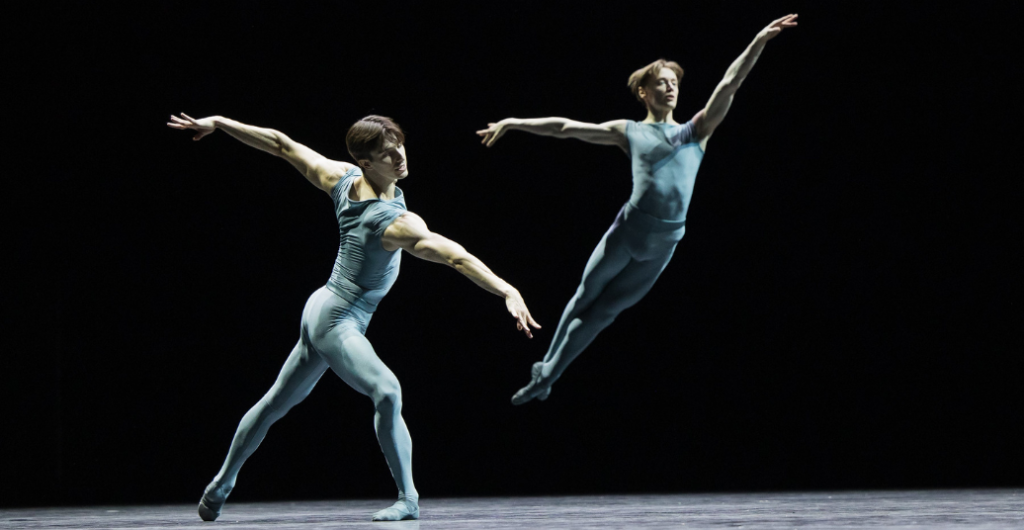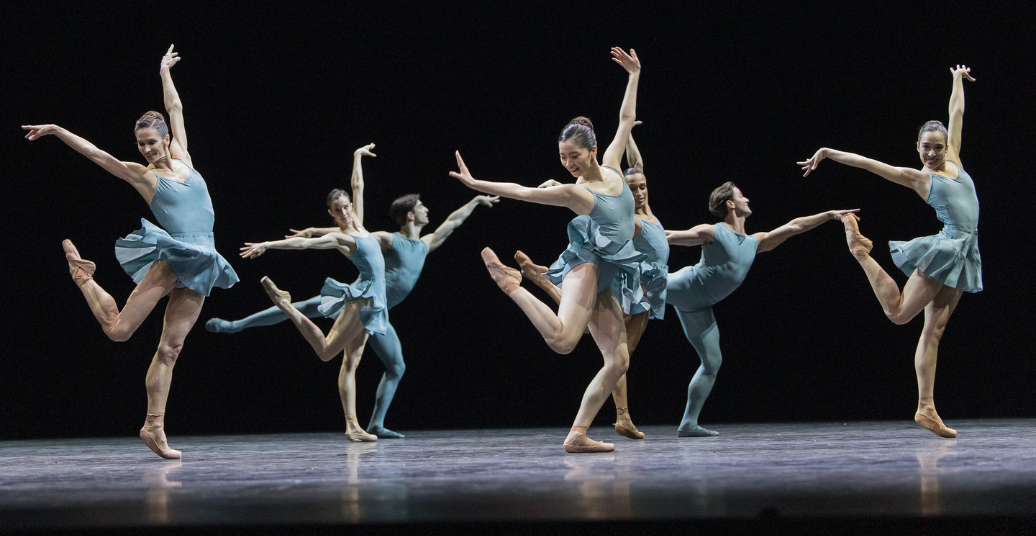Staatsballett Berlin performs three groundbreaking works by William Forsythe, who remounted them with the company’s dancers. The evening offers a lively encounter with ballet as a process to decipher by dancers and audience alike. Premiering at Deutsche Oper on 16 February 2024, it also shows between 19–23 February, 4–14 March, and 1–9 April.
Fosythe’s striking choreographies have extended the boundaries of ballet technique and conventions since the 70s, continuing a revolutionising of the form. “I had to find my way around Balanchine, Petipa, Cranko, MacMillan, the whole crowd,” Forsythe said in a 2012 interview. Approximate Sonata 2016 (2016), One Flat Thing, reproduced (2000) and Blake Works I (2016), brilliantly titled (clean and poetically complex like his choreographies), are three exquisite, contrasting vignettes into the choreographer’s radical exploration of the visual distribution of contrapuntal balletic structure.
Blake Works I, the third and final work shown in the trilogy at the Deutsche Oper, is more historical than analytical in Forsythe’s innovative research into ballet, in comparison to the others. Created in 2016 for the Paris Opera Ballet, it’s the most rooted in the classical idiom. Blake Works I uses seven songs from James Blake’s pop album The Colour in Anything, full of emotional intensity, which push the limits of musical ballads. Blake’s moody, watercolour sonic landscape is echoed in the powder blue leotards and chiffon ballet skirts worn by the dancers: a basic uniform for regular class.
In conversation with Staatsballett Artistic Director Christian Spuck and dramaturge Katja Wiegand, Forsythe says, “The dancers will show you their opinion about the work, rather than be subject to the work”. True to his desire to make dance with and for dancers he works with, Blake Works I reflects its initiation, exploring the French school of classical ballet, recontextualised and experientially authored now by the Staatsballett ensemble. In homage to his formative and influential roots, the choreography weaves together canonical ballet exercises, structures from ballet class and references to styles and periods.

Sitting in the centre of the stalls, captivated by the abundant energetic hope and joy in the dancing and music, I fathom my own embodied memories of, and reverence for, balletic structures (aspiring lines, symmetry, group tableaux, pas de deux) with the visual twists and renewals of the form in this work, reflecting the poetic melodies and words of Blake’s music (“I hope I’m right when I’m speaking my mind”). This love letter to ballet stirs my own bodily passion for ballet dancing, which, like many, manifests in unconditional devotion through countless repetitions of the forms and sequences performed here on stage. Ballet has felt to me like both a lifelong backbone and curse. It gave me much strength, skill and spiritual vitality through its codified movement forms—as well as habits and associations that can be conditioned through oppressive teaching and elitist structures, which I’ve spent years trying to transform, to learn to use with renewed agency. In Blake Works I, I see a virtuosic reflection of such reclaiming.
It is a joyful and empowering celebration of the art of ballet that the Staatsballett performers enact with style and grace, underpinned by Forsythe’s profound commitment to a discourse with dance; as he tells dancers, “You have to make a reaffirmation of ballet and yet at the same time bring into question how ballet is danced.” When I take ballet class today, my dancing is most joyous when we train with pop music, embracing the vibrant life force within the hypothetical structure that is ballet, all ballets, every arabesque.
Approximate Sonata 2016 / One Flat Thing, reproduced / Blake Works I by William Forsythe premiered at Staatsballett Berlin/Deutsche Oper on 16 February 2024, it also shows between 19–23 February, 4–14 March, and 1–9 April. Tickets




